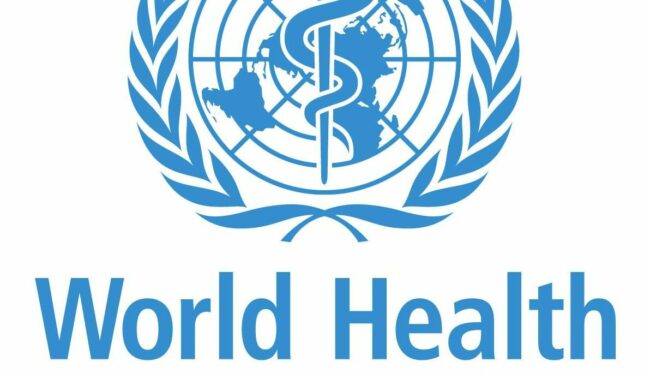The World Health Organisation (WHO) has launched a global strategy to accelerate the elimination of cervical cancer by 2030.
The year 2023 marked the third year since 194 countries committed to accelerating the elimination of cervical cancer as a public health problem.
In commemoration of the Cervical Cancer Elimination Day of Action, Merck Sharp and Dohme (MSD), a global research-intensive biopharmaceutical company, organised a virtual media event themed “Progress Towards HPV Vaccination in Sub-Saharan Africa.”
The event was an avenue to present the latest data on the progress made in HPV immunisation in countries in East, West, and Southern Africa and towards the 90:70:90 cervical cancer elimination targets set out by the World Health Organisation (WHO).
Under the 90:70:90 targets, the WHO aims to end cervical cancer through the vaccination of 90% of girls, ensure that 70% of women are screened, and also see to it that 90% of women receive treatment.
In her presentation titled “Understanding HPV and the Burden of HPV Diseases in Sub-Saharan African Countries,” Dr Essoh stated that while cervical cancer is the fourth most common cancer among women globally, it is the second leading cause of female cancer in Africa, adding that the cervical cancer incidence rate in Africa is higher than the world average. She further stated that 90 per cent of new cases and deaths occur in low- and middle-income countries.
Further highlighting statistics, she stated that 425.68 million women aged 15 years and older are at risk of developing cervical cancer, with 117,316 women being diagnosed, leading to 76,745 deaths. She noted that 34 out of every 100,000 women are diagnosed with cervical cancer, while 23 out of every 100,000 women die from cervical cancer annually.
According to her, the elimination of cervical cancer is possible if all countries reach and maintain an incidence rate of below 4 cases per 100,000 women. She highlighted two prevention methods, which are the primary and secondary prevention methods. Dr Essoh stated that primary prevention involves the administration of human papillomavirus (HPV) vaccines primarily targeted at girls aged between 9 and 14 in low- and middle-income countries and both boys and girls within the same 9 to 14 age range in developed countries. She emphasised that HPV vaccines are effective and safe to prevent cervical cancer.
She stated that secondary prevention methods involve screening to detect and treat pre-cancerous lesions.
The vaccine clinical development expert further stated that cervical precancerous lesions can be treated through various treatment methods.
In her presentation titled “Progress Towards 2030 Cervical Cancer Elimination Targets in Sub-Saharan African Countries,” Dr. Phionah Atuhebwe highlighted the Cervical Cancer Elimination Initiative, which was introduced by the World Health Organisation and is geared towards eliminating cervical cancer.
The initiative is categorised into three targets, which are the primary, secondary, and tertiary targets. She said, “The primary target is that 90 per cent of all girls should be fully vaccinated with the HPV vaccines by the age of 15. The secondary target is that 70 percent of women should be screened with two high-performance screening tests, first, when they attain the age of 35, and second, when they attain the age of 45.
“The tertiary target is that 90 per cent of women at the pre-cancerous stage receive treatment, while 90 per cent of women who have been diagnosed with invasive cancer are managed for their pain.”
Reiterating that over 90 per cent of cervical cancer cases are recorded in Africa and that acceptance of HPV vaccines can reverse the high cervical cancer recurrence, she said: “We do not want to see the high rate of cervical cancer occurrence again because this is one of the two cancers that is preventable by the HPV vaccines.
The vaccines are highly effective and efficacious and can stop 90 per cent of cervical cancers. There is no reason why we should not be able to eliminate this disease. We want to have all countries have less than 4 cases of cervical cancer per 100,000 women.”
Speaking on the progress made in Africa, she identified that Nigeria is the 27th country in Sub-Saharan Africa to introduce the HPV vaccine.
She added that HPV vaccine acceptance was moderate in West Africa and high in Eastern and Southern Africa.
According to her, Cameroon and Sao Tome and Principe are the only countries in Central Africa to have introduced the vaccine.
Speaking on the global impact and acceptance of the HPV vaccines, Dr Atuhebwe said: “HPV vaccines continue to show an excellent safety profile, and after 15 years of use of the vaccine, there is real-life evidence that vaccination prevents invasive cervical cancer.”
Prof. Mosa Moshabela, in his presentation, identified barriers to the successful implementation of HPV vaccination programmes in sub-Saharan Africa.
According to him, some of the obstacles are sociocultural, vaccine supply constraints, safety concerns and efficacy, as well as costs and sustainability, among others.
He said, “There are concerns around the safety and effectiveness of the vaccines. When this barrier has been overcome, you have issues of trust related to scientists, governments, and pharmaceutical companies. And that mistrust often influences whether people will accept vaccines or not.
That is why you see that the issue of vaccines becomes quite political, and we cannot neglect the fact that health is political. We have to embrace and work with that challenge.”
Prof. Moshabela further highlighted availability, affordability, distribution, and cultural and religious beliefs as hurdles that also have to be overcome for a successful vaccination process.




